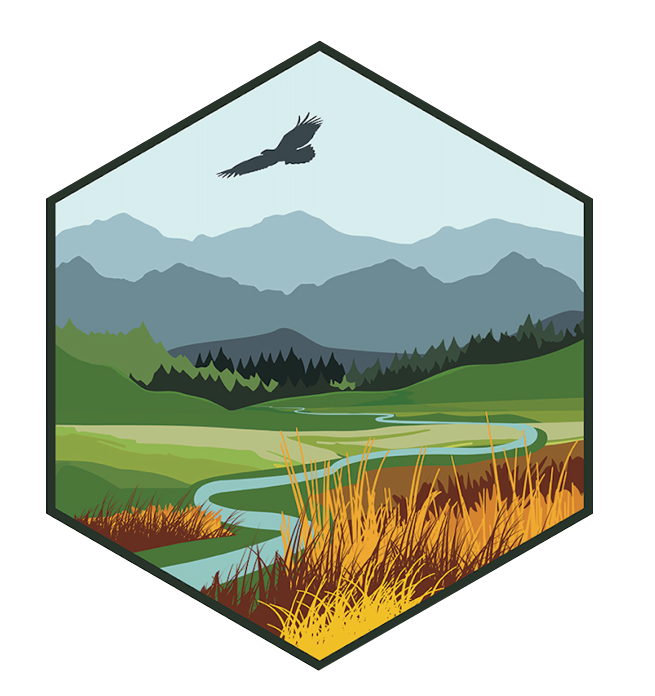Southwestern Colorado is already experiencing the effects of climate change in the form of larger and more severe wildfires, prolonged severe droughts, tree mortality from insect outbreaks, and earlier snowmelt. Climate scientists expect the region to experience more frequent summer heat waves, longer-lasting and more frequent droughts, and decreased river flow in the future (Lukas et al. 2014). These changes will ultimately impact local communities and challenge natural resource managers in allocating water and range for livestock grazing under unpredictable drought conditions, managing forests in the face of changing fire regimes, and managing threatened species under shifting ecological conditions. Considering the wide-ranging potential impacts of climate change in the region, the goal of this project was to collaborate with decision-makers to develop strategies to reduce those impacts on people and nature. Scientists, land managers, and local communities worked together to identify actions to reduce the negative effects of climate change. Known as “adaptation strategies,” these actions are expected to facilitate effective planning and management under shifting climate conditions. To inform strategy development, researchers and planners provided information on the vulnerability of ecosystems, modeled plausible future climate conditions, and identified the social contexts in which adaptation decisions are made. The project focused on the San Juan River Basin and Upper Gunnison River Basin of southwestern Colorado, though one of the objectives of the project was to develop an adaptation toolkit that can be applied to other landscapes. By identifying appropriate adaptation strategies and actions, this project will help improve the resilience of local communities and ecosystems elsewhere in the face of an uncertain future.
USGS researchers from the North Central CASC and the Northern Prairie Wildlife Research Center recently collaborated with the National Park Service Climate Change Response Program to develop a new product that communicates the results from a collaborative effort—involving resource managers, subject-matter experts, and a larger climate change adaptation team—to identify potential climate impacts and management responses in Badlands National Park. The researchers used scenario planning and ecological simulation modeling to anticipate management challenges and identify options for Badlands National Park and adjacent federal and tribal lands in the coming decades (through 2050). The ecological simulation models help track complexities of the real world and serve as virtual laboratories for asking “what if…?” questions about how systems might respond under different scenarios. Insights from this collaborative effort will help inform resource managers who are tasked with prioritizing investments that better position the park to meet the challenges posed by climate change.
Global climate models are a key source of climate information and produce large amounts of spatially explicit data for various physical parameters. However, these projections have substantial uncertainties associated with them, and the datasets themselves can be difficult to work with. The project team created the first version (cst 0.1.0) of the Climate Futures Toolbox, an open source workflow in R that allows users to access downscaled climate projections data, clip data by spatial boundaries (shapefile), save the output, and generate summary tables and plots. A detailed R vignette guides users to easily generate derived variables in order to answer specific questions about their region of interest (e.g. how will the daytime high temperature in the month of June change by midcentury?). Managers and scientists will be able to use this resource to evaluate the potential impacts of climate change and identify appropriate and robust adaptation strategies. CFT Concept: The image attached below shows an overview of the Climate Futures Toolbox package’s two main functions. The cstdata() function streams downscaled MACAv2 climate data for spatial regions of interest, which can be summarized into data.frame objects with daily climate data using the cst_df() function. This enables subsequent tidy climate data analysis, including generation of derived climate variables and data visualizations.
Abstract (from OxfordAcademic): The whitebark pine (Pinus albicaulis Engelm.) tree species faces precipitously declining populations in many locations. It is a keystone species found primarily in high-elevation forests across the Western US. The species is an early responder to climate change and qualifies for endangered species protection. We use contingent valuation to estimate the public’s willingness to pay for management of the whitebark pine species. In contrast, previous work centres on valuing broader aspects of forest ecosystems or threats to multiple tree species. While only approximately half of the survey respondents have seen whitebark pine, the mean willingness to pay for whitebark pine management is $135 per household. When aggregated across all households from the three sampled states, willingness to pay totals $163 million. This information is valuable to forest managers who must make difficult decisions in times of resource constraints and climate change.
The National Park Service (NPS) is responsible for managing livestock grazing in 94 units, and several park grazing management planning efforts are currently underway. However, there is a recognized need to update grazing management practices to address potential future effects of management practices and climate change. The goal of this project is to outline the steps required for developing NPS grazing management plans, to identify information needs and availability for these planning processes, and to initiate a scenario-based pilot project for meeting these needs at a given park unit. This will serve as an important step toward developing a transferable process to help parks ensure that grazing management practices are responsive and adaptive to future climate change. In the first phase of the project, the team will engage resource managers from three NPS units in western Colorado: Dinosaur National Monument (DINO), Curecanti National Recreation Area (CURE), and Black Canyon of the Gunnison National Park (BLCA). Working with resource managers and subject-matter experts, the team will articulate and describe the planning processes and available information with regard to NPS grazing management. The team will then convene researchers, managers, subject-matter experts, and climate change adaptation specialists at a participatory climate change scenario planning workshop to develop a small set (3-5) of challenging, plausible, relevant, and divergent future scenarios that qualitatively assess how grazing resources and management at DINO may be affected under climate change. Concurrently, the process will identify common key characteristics that may be regionally applicable to BLCA and CURE, and will consider caveats for broader use at parks managing grazing in other regional biomes. Workshop participants will provide input on the project and process, identify quantitative information needs, and offer recommendations for streamlining the effort into a scalable, transferable approach that could be used to guide other park units seeking to update their own grazing management plans. A potential second phase of this project would entail the development of a modeling approach to provide quantitative information to NPS units that allow livestock grazing. This task would leverage recent advances in our ability to model grazing activities to evaluate the effects of climate change and management actions on vegetation within a specific park unit. Management actions that could be evaluated include stocking rates, prescribed fire, and invasive plant management practices.
Abstract (from ScienceDirect): Big sagebrush (Artemisia tridentata Nutt.) plant communities are found in western North America and comprise a mix of shrubs, forbs, and grasses. Climate, topography, and soil water availability are important factors that shape big sagebrush stand structure and plant community composition; however, most studies have focused on understanding these relationships at sites in a small portion of the big sagebrush region. Our goal was to characterize detailed stand structure and plant composition patterns and identify environmental variables related to those patterns by sampling 15 sites distributed across the western United States. In each site, we characterized stand structure at the individual shrub level and at the site level. We quantified size distributions and assessed relationships among canopyvolume, age, and height. We also characterized functional type cover and species composition and related those to climatic, topographic, and edaphic variables. Mean big sagebrush age ranged from 21 (± 8) to 57 (± 22) yr at individual sites, mean height ranged from 0.23 (± 0.12) to 0.67 (± 0.23) m, and mean canopy volume ranged from 0.03 (± 0.04) to 0.62 (± 0.51) m3. Bare ground and litter contributed the most cover (mean = 64%), followed by big sagebrush (mean = 39% of vascular plant cover). There was a negative relationship between big sagebrush cover and grass and forb cover. Species composition was related to both climate and elevation, likely because these variables influence water availability. Although our study was limited to 15 field sites, our detailed descriptions of widely distributed sites provide insight into the magnitude of variability in big sagebrush plant community structure.

